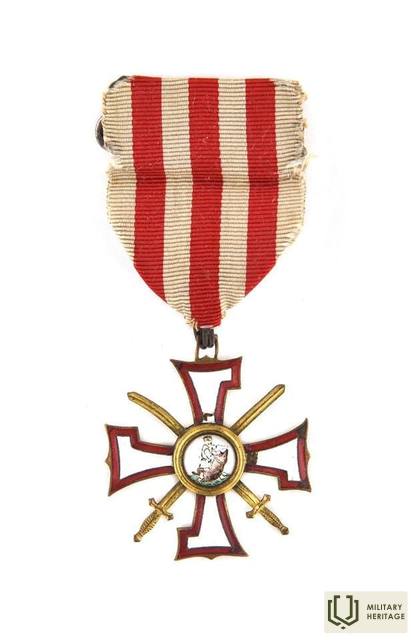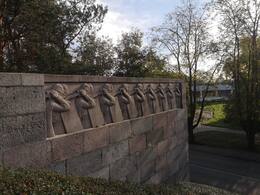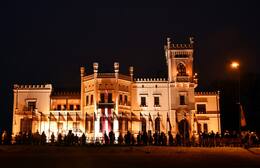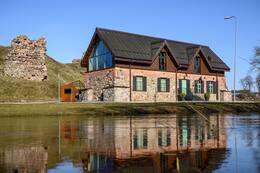7. Sigulda jalaväerügemendi autasustamine bermontiaadil, suurväelase Valija Veščūnas autasustamine Lāčplēsise sõjakomandoga Alūksnes
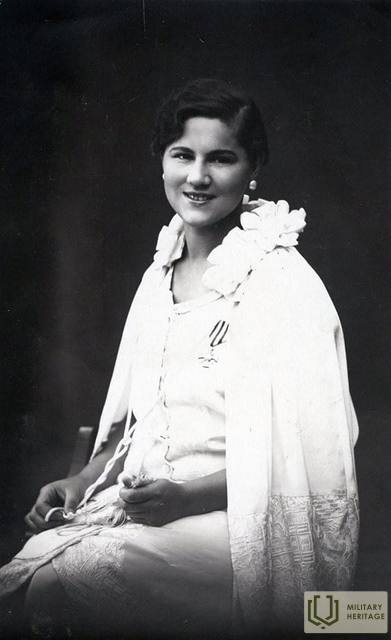
Pärast Läti Vabadussõda autasustati suurväelast Valija Veščunast Lāčplēsise sõjakorraldusega 1919. aasta 19. novembri plaanimajas toimunud lahingute eest bermontlastega. Valija Veshchun oli üks esimesi, kes ületas vaenlase tule all Lielupe.
„Ma juba teadsin, kuidas tulistada, ja see oli 1919. aastal Spilve niitudel. Selle aja jooksul oli meie rügemente mitmekordistunud. Me varjasime vaenlase kuulide eest müüri kapotide taha. Ma ei tea, kas keegi sai löögi või mitte, aga see pole asja mõte. Isegi mõttega, et Läti sõdur võib vigastada saada, oli mu süda liiast. Olin juba pidanud nägema haavatuid ja see tekitas ka minu vihkamise Bermonti ja tema kuulujuttude vastu. Teadvusetu rahulolematus ebakindla eksistentsiga oli muidugi varem, nüüd on see realiseerunud. Samuti oli mul arusaam Läti püsiva riigi loomise vajalikkusest ja tähtsusest. Bermont kõndis meist ette, rüüstas kõike, kuid igal sõduril oli kodus naine, lapsed või vanemad, sugulased, kellel olid suud ära lõigatud. Võõrale maale tulles tundsid bermontlased vastutust ainult oma olemasolu ja kõhu eest. Meie olime vastutavad oma kodumaa ja rahva jätkuva eksisteerimise, selle väikese maalapi tuleviku eest. Jah, siis sõidame nad Kivi juurde. Me lihtsalt ei lubanud mõtet, et võime kaotada, ja nii me võitsime.
Meie 7. Sigulda jalaväerügement oli asunud elama Aluksne lähedale. Tseremoonia ise (Lāčplēsise sõjakorra esitlus) toimus umbes nii. Väed olid väljakule rivistunud, ordeni andis Läti president Čakste. Mind kutsuti Alūksne lossi, kus toimus pidulik lõunasöök. Pärast seda vaatasime Alūksne lossi akendest vägede võlgu. Mäletan vaid mõnda, kes oli minuga - tema abikaasa kolonel Frickaus. ”
LNVM virtuaalnäitus "Lāčplēsise sõjakomando rüütel - Valerija Valija Veščuna -Jansone" https://www.youtube.com/watch?v=ZtOtskNlhZQ
Valija Valeria Veschun-Jansone mälestusi. // Ralph Vilands. Ta oli kuusteist. Jūrmala, 30. märts 1989, nr. 13.
Aluksne muuseum
LNVM virtuaalnäitus "Lāčplēsise sõjakomando rüütel - Valerija Valija Veščuna -Jansone" http://lnvm.lv/?p=12079
https://www.la.lv/skukis-kas-nebijas-naves
Seotud objektid
Sudrabkalniņši mägi - mälestusmärk võitluseks Bermondti armee vastu
Asub Riias, Pardaugavas, Sloka ja Kurzeme avenüü ristumiskohas.
1919. aasta novembri alguses, Läti Vabadussõja ajal, toimusid Pardaugavas tänavalahingud Läti armee ja Bermonti vägede vahel. Piirkonnas toimus otsustav rünnak Bermonti armee vastu. 1937. aastal avati Sudrabkalniņas Kārlis Zāle projekti järgi monument, millega austatakse 6. Riia jalaväerügemendi langenud sõdureid ja tõsteti esile sõjalisi jooni.
Kujundatud mälestusmüüriks – sümboolseks kindlustuseks, mille väraval on kujutatud vastase rünnakuteed blokeerivat lõvi. Tellitud Daugavgrīva linnuse kaitsevalli kiviplokkidest ja sepistatud Vabadussamba allesjäänud graniidist. Mälestuspaiga maksumuseks kujunes ligi 35 000 latti. Võrdluseks võiks sellise summa eest soetada 4 Lätis toodetud autot “Ford - Vairogs V8 De Luxe”.
Täna saab näha üht muljetavaldavamat Vabadussõja mälestuspaika.
Alūksne muuseum
Alūksne muuseum asub 19. sajandi lõpus uusgooti stiilis ehitatud Alūksne Uues Lossis, mis on riiklik arhitektuurimälestis. Muuseumis on välja pandud näitused „Totalitaarse režiimi ohvrite mälestustuba”, mis jutustab Alūksne valla elanike saatusest Siberis ja Kaug-Idas, ja „Ajastute pidusöök“, mis tutvustab Alūksne ajalugu eelajaloost tänapäevani. Eraldi väljapanek on pühendatud 7. Sigulda jalaväepolgu panusele sõjas, kultuuris ja ühiskonnaelus. 7. Sigulda jalaväepolku hakati moodustama 20. juunil 1919 Naukšēni mõisas. Esialgu moodustati Põhja-Läti Brigaadi reservpataljoni põhjal lahingurühm, kuhu kuulus 22 ohvitseri ja 1580 sõdurit; seda kutsuti Dankersi diviisiks. See kuulus 3. Jelgava polgu 2. pataljoni koosseisu, aga pärast 23. augustit, mil täiendati roodude arvu, 7. Sigulda jalaväepolgu koosseisu. Polk võitles Bermondti vastu ning viidi 5. jaanuaril 1920 üle Latgale rindele enamlaste vastu võitlema. Pärast rahulepingu sõlmimist Nõukogude Venemaaga valvas polk Läti idapiiri. Läti Vabadussõjas kaotas elu üle 200 polgu sõduri, 85 sõdurile anti Karutapja orden. 1921. aastal paigutati 7. Sigulda jalaväepolk Alūksnesse. Polgu staap seati sisse Alūksne Uues Lossis. Pärast Teist maailmasõda võtsid lossi üle Nõukogude julgeolekuasutused. Alates 1950. aastate lõpust on seal tegutsenud kultuuriasutused: täitevkomitee kultuuri- ja kinematograafiaosakond, pioneerimaja, raamatukogu, kino ja muuseum.
Vaba Riigi aarete maja
Ainulaadne ekspositsioon Läti esimese vabariigi sõjaväe- ja tsiviilpreemiate ajaloost, samuti erinevatest riiklike ja tsiviilorganisatsioonide tegevusega seotud organisatsioonidest ajavahemikul Läti Vabadussõjast Teise maailmasõjani.
Näitusemajas on eksponeeritud mitusada erinevat ajaloolist tõendit Läti ja välismaistest erakogudest, mis hõlmavad ajavahemikku 1918–1940, avades leheküljed Latgale ja Rēzekne ajaloost.




